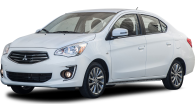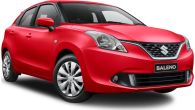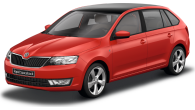Kia Rio is a small Korean model that was a relatively slow seller in its formative years in Australia. Sales picked up significantly with the launch of the stylish new model of September 2011. Not many of these will be on the used-car market as yet, but are worth hunting down if your budget can handle it.
The Kia Rio is sold as either a four-door sedan or a five-door hatchback. It has good interior space and can seat four adults without too much squeezing but is much more likely to be used by singles and couples. We have seen more than one being used by sensible families with two or three preteen kids.
Build quality could have been better on the first generation Rios, sold from July 2000. It improved significantly in the gen-two cars from August 2005, and is up there with the best in its class from the 2011 third-generation car onwards.
The bodies of the older models were generally better assembled than their interiors, though we do see the occasional rough Rio with problems inside and out. Definitely a candidate for a full professional inspection.
Handling dynamics have improved over the years and the latest Rios provide a fair degree of enjoyment for the keen driver. However, some may find the ride a little too firm on rough roads. We suggest finding some bumpy roads for your pre-purchase road test.
A good set of tyres can work wonders for the handling and steering feel of older Kia Rios. They’re not cheap, but we know enthusiastic drivers who swear by the transformation of their low-cost cars.
Kia Rio is powered by a 1.5-litre four-cylinder engine in the pre-2005 series. If worked moderately it will sound and feel reasonably good, but drive it hard and it gets noisy and harsh. Engine performance is generally fine as this is a relatively light car. But it can struggle a bit on hills, so it's smart to find a hilly area to do some of your pre-purchase road testing.
The newer – from 2005 – Rios have a more modern 1.6-litre four-cylinder engine. It’s more powerful, smoother and significantly more refined. This powerplant was further improved in the 2011 series Rios.
A lower cost 1.4-litre engine was added to the range in March 2007, its performance is OK if you’re willing to work at getting the best from the car, but is probably best regarded as an around-town engine.
Transmission options are five-speed manual and four-speed automatic in the first two generations of the Kia Rio. Six-speed units, both manual and automatic were a big selling feature of the all-new 2011 model.
The four-speed auto takes the edge off the engine’s performance, but it's smooth enough and makes life simpler if you do a lot of heavy-duty commuting.
The experienced home mechanic can do a fair bit on a Kia Rio. Underbonnet access is good and these cars have old and tried technology. Don’t do any safety-related work yourself, leave that to the professionals.
A workshop manual is a low-cost investment that can save you time and bleeding knuckles.
Insurance is usually towards the lower area of mid-range, but seems to vary more than usual from one company to another. So it pays to shop around, as always be make sure you understand what you get, and don’t get, for your premium.
WHAT TO LOOK FOR
Look at the interior and boot for signs of general wear and tear. The back seat is often the first to suffer if bored kids have spent time back there.
The engine should start within a second or so, even when it’s cold. Within another few seconds it should settle into a steady idle.
Let the engine idle for about a minute, then floor the throttle in a quick takeoff, smoke from the exhaust means excessive engine wear.
A manual gearbox should be moderately light in its action and not crunch on any of the downchanges, no matter how fast they are made. The third-to-second gearchange is usually the first to give trouble.
If the automatic transmission is slow at going into Drive or Reverse from Park or Neutral it may be due for an overhaul.
Be sure the brakes pull the Rio up squarely. Make sure that ABS, if fitted, operates when you push the pedal hard, it will give a pulsing feel through the pedal if all is OK.
Poorly repaired crash damage will show as paint which doesn’t match from panel to panel; a ripply finish in a panel; or tiny specks of paint on non-painted parts.
CAR BUYING TIP
City oriented cars inevitably get bumped and scratched. Provided repairs are done promptly and correctly this isn’t a problem. But if there’s any doubt get a report from a professional.
Kia RIO 2000:
| Engine Type | Inline 4, 1.5L |
|---|---|
| Fuel Type | Unleaded Petrol |
| Fuel Efficiency | 8.8L/100km (combined) |
| Seating | 5 |
| Price From | $2,200 - $3,520 |
Pricing Guides

Range and Specs
| Vehicle | Specs | Price* |
|---|---|---|
| S | 1.4L, Unleaded Petrol, 4 SPEED AUTOMATIC | $6,050 - $8,580 |
| S | 1.4L, Unleaded Petrol, 6 SPEED MANUAL | $5,170 - $7,590 |
| Si | 1.6L, Unleaded Petrol, 6 SPEED AUTOMATIC | $6,490 - $9,130 |










.jpg)







































.jpg)

